Discover Northumberland National Park: A Guide
One of the least-visited of it’s kind, Northumberland National Park is a hidden jewel in the crown of northern...
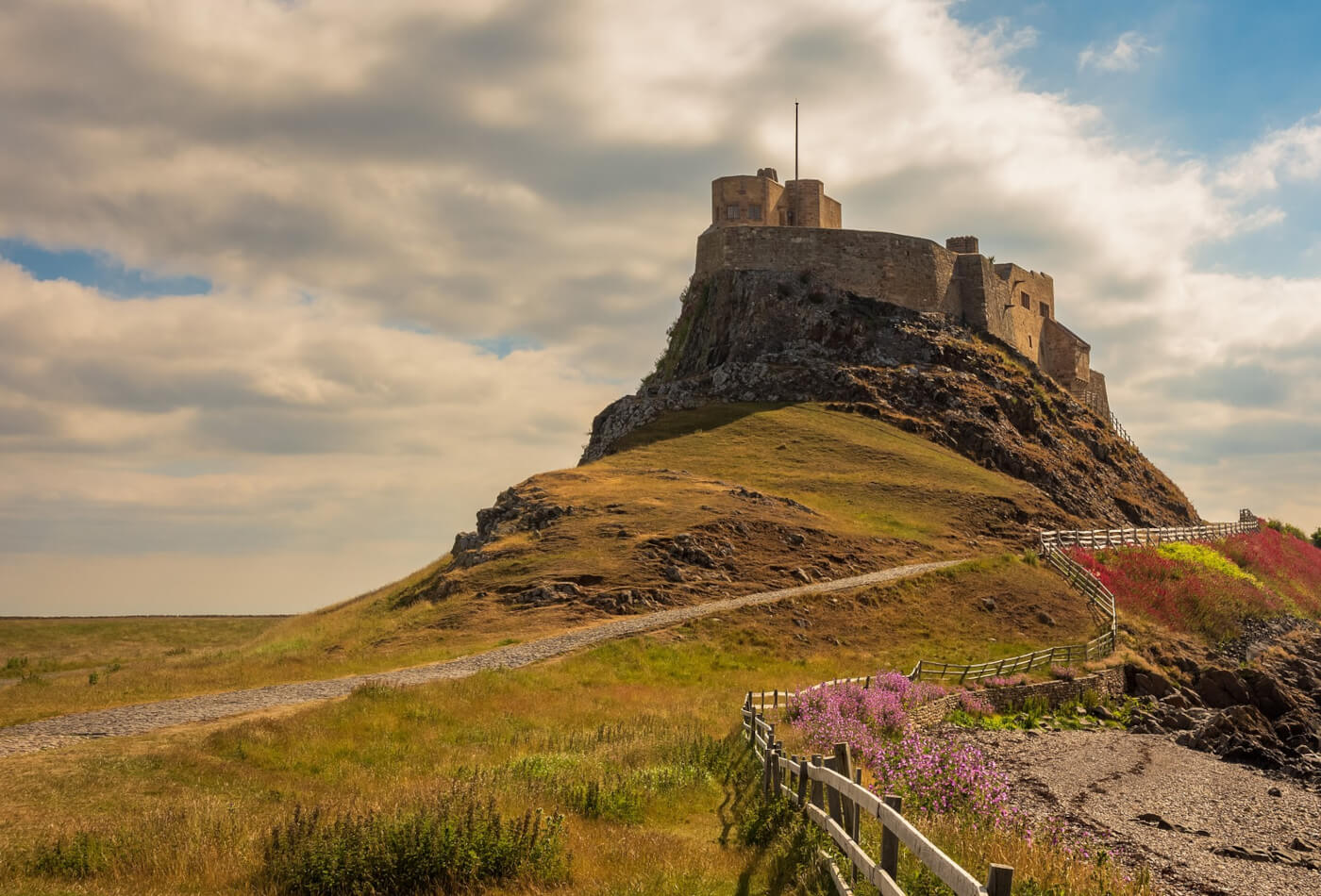
A pint-sized tidal island sitting off the coast of Northumberland, there’s a wonderful collection of things to do on Holy Island.
Home to an ancient priory, a 16th century fortress and a charming colony of puffins, there’s lots to see and do here.
We’ve compiled a handy list of our favourite things to do in Holy Island. Continue reading to find out more…
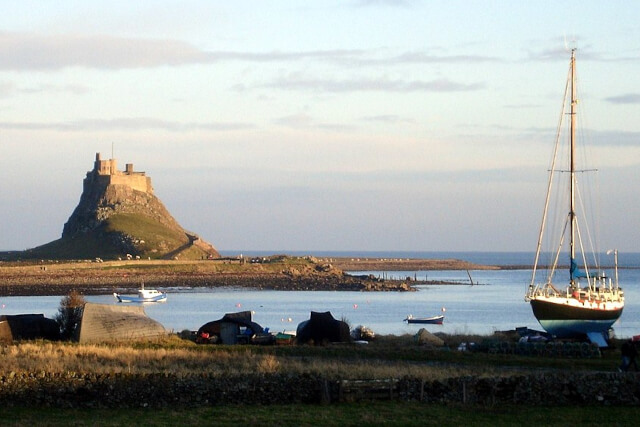
The Holy Island of Lindisfarne is a small tidal island set a short distance from the glistening shores of the Northumberland Coast AONB. Despite its size, there’s countless things to do in Holy Island.
The island is joined to the mainland of Northumberland by a tidal causeway. The causeway is covered twice a day by the sea, leaving the island inaccessible.
We would recommend checking the Holy Island crossing times before venturing on or off the island to avoid becoming stranded.
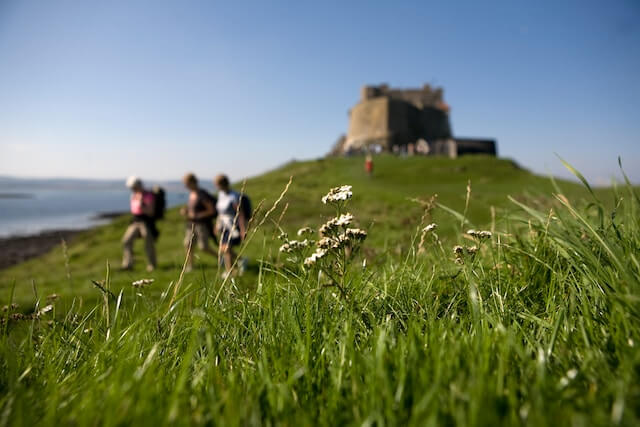
A place of pilgrimage, the tranquil beauty of the Holy Island of Lindisfarne has made it a sanctuary enjoyed since antiquity.
Thought to have a history dating back as far as the 6th century AD, the Holy Island of Lindisfarne is the source of England’s Christian Heritage.
After being gifted the island by King Oswald in 635AD, it was here on the island of Lindisfarne that St. Aidan established his monastery. This monastery is where the Christian message was initially crafted before being spread across the world.
The Holy Island is the birth-place of the Lindisfarne Gospels, a series of four gospels, this Christian manuscript outlines the life and teachings of Jesus Christ.
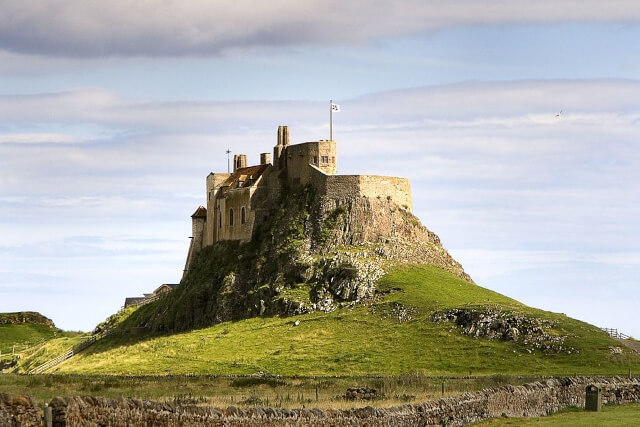
Overlooking the island from its elevated position on a rocky outcrop is Lindisfarne Castle. A truly iconic landmark, be sure to add this attraction to your list of things to do in Holy Island.
Built in the 16th century, Lindsifarne Castle was later converted into a private holiday home by architect Sir Edwin Lutyens in 1901. These renovations saw the ship room become the drawing room and the Queens battery becoming the north bedrooms.
Owned by Edward Hudson, the founder of Country Life magazine, the castle is now part of the National Trust.
Exquisite architecture can be seen inside the castle, with Elizabethan, Jacobean and Neo-Gothic elements. Outdoors, a flourishing flower garden is a must-see, designed British horticulturalist Gertrude Jekyll.
Be mindful that due to cobbled ramps and steps, access to the castle may not be suitable for those with limited mobility.
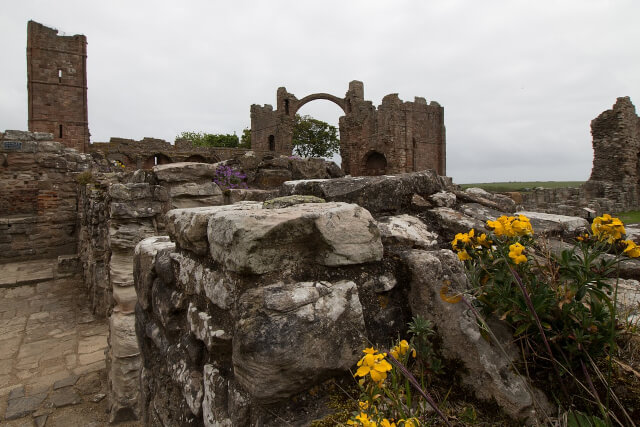
A popular family-friendly attraction, a visit to Lindisfarne Priory is a must on your list of things to do on Holy Island.
The ruins of this medieval monestry hold a rich religious history. Built by ancient monks over 1,400 years ago, Lindisfarne Priory was home to St Cuthbert, the patron saint of Northumbria, and the Lindisfarne Gospels.
Today, visitors can walk amongst the priory ruins, marveling at the walls of the Monastic buildings that still stand today. Keep your eyes peeled for the original burial ground of St Cuthbert before his remains were trasferred to Durham Cathedral.
There’s also the Lindisfarne Heritage Centre. Here you can browse excavated objects, learn about the islands Viking raids and read the Lindisfarne Gospels.
At low tide, Holy Island Beach reveals a wide expanse of golden sand, perfect for paddling the shores or making a splash.
One for the pet-owners, Holy Island Beach is dog-friendly, and stretches for three quarters of a mile. Plenty of space for sandy walkies!
Fancy trying something new? Situated on the mainland, a local stable, Kimmerston Riding Centre, offers unique horseback rides to Holy Island Beach.
If you’re visiting between February and October, you might even be lucky enough to spot grey seals lounging on the shores.

Albeit small in size, theirs a mouthwatering selection of bars, restaurants and cafes scattered across Holy Island. Even when the tide is in, you’re still able to enjoy a tasty treat!
When stomachs start to rumble, we’d recommend The Crown and Anchor, arguably one of the best restaurants on the island.
Pet-friendly and boasting a sunny beer garden, there’s nowhere better to enjoy a bite to eat. Choose from a hearty, homecooked menu, all prepared using fresh, seasonal ingredients.
View this post on Instagram
If you’re in the mood for a lighter bite, Pilgrims Coffee is a must. A family-run cafe, you can sample coffee roasted in-house alongside a delicious selction of cakes and scones.
Across the causeway you’ll find The Barn at the Beal or The Lindisfarne Inn, both serving something to suit all tastes and budgets.
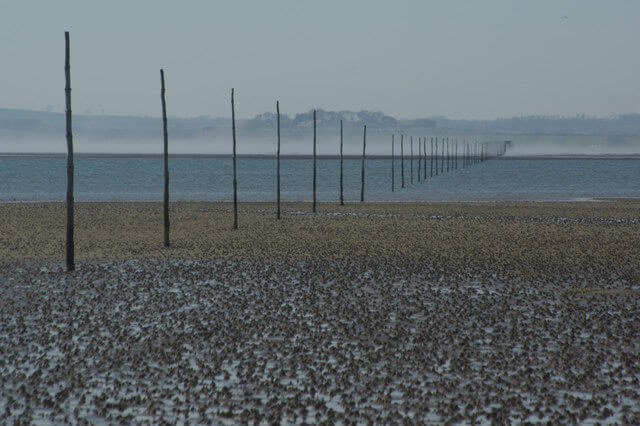
A unique walking experience, the Pilgrim’s Way is a walking route linking the island to the mainland. The Pilgrim’s Way follows the route enjoyed by inhibitors of the island before the Lindisfarne Causeway was constructed in 1954.
Before the roads construction, vertical poles jutting out of the sand indicated the safest route between Holy Island and mainland Northumberland.
The route begins on the mainland at the end of the causeway. The first pole indicates the start of the Pilgrim’s Path, with a line of poles stretching east until reaching the island. Follow the poles from end to end.
Be mindful that this is not your regular walking experience. Crossing The Pilgrim’s Way can be dangerous if you do not refer to the tide times. Tide water floods the Pilgrim’s Way much quicker than the Lindisfarne Causeway.
Follow the safety information provided by the Northumberland Coast AONB here.
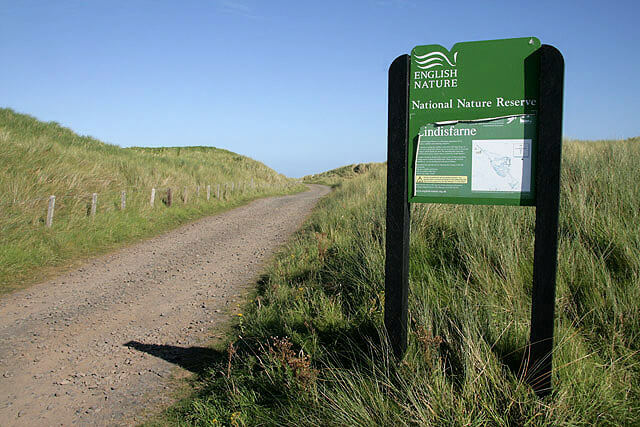
Pilgrims of a different breed also travel across the causeway to marvel in the islands treasures.
Holy Island is considered one of the top bird watching spots in Northumberland. Home to the Lindisfarne National Nature Reserve, it’s clear to see why.
Stretching over 3,541-hectares, the Lindisfarne National Nature Reserve is one of the biggest national nature reserves in the UK. A truly awe-inspiring place to visit on Holy Island, this nature reserve protects migrating wintering bird populations.
3,000 species have been recorded here, including the pale-bellied brent goose, merlin and bar-tailed godwit. The mudflats are a refuge for waterfowl, whilst rocky shores welcome the common seals.
Ready to embark on an adventure and experience some of these amazing things to do in Holy Island first hand?
Secure a stay in one of these wonderful holiday cottages on Holy Island and start planning your fun-filled itinerary today!
For more inspriation on how to spend your time in our picture-perfect region, give our guide on things to do in Northumberland a read!
Images courtesy of: Chris Combe – (CC BY 2.0); Matthew Hunt – (CC BY 2.0); Stephen McKay – (CC BY-SA 2.0); Walter Baxter – (CC BY-SA 2.0);
This blog was updated based on original content written by Northumbria Coast & Country Cottages